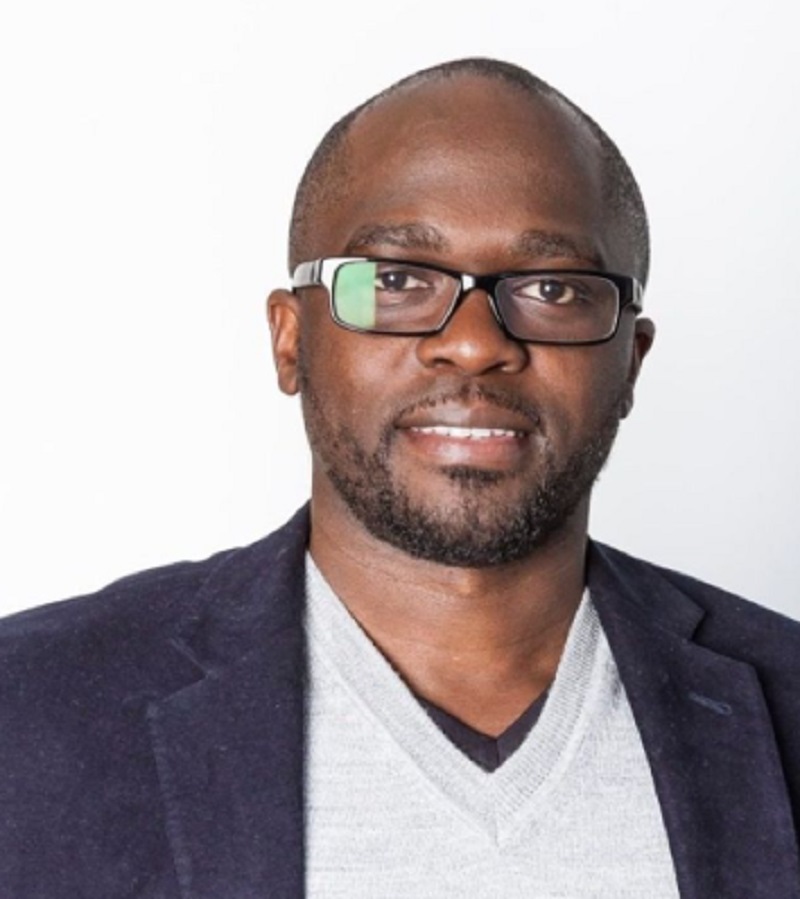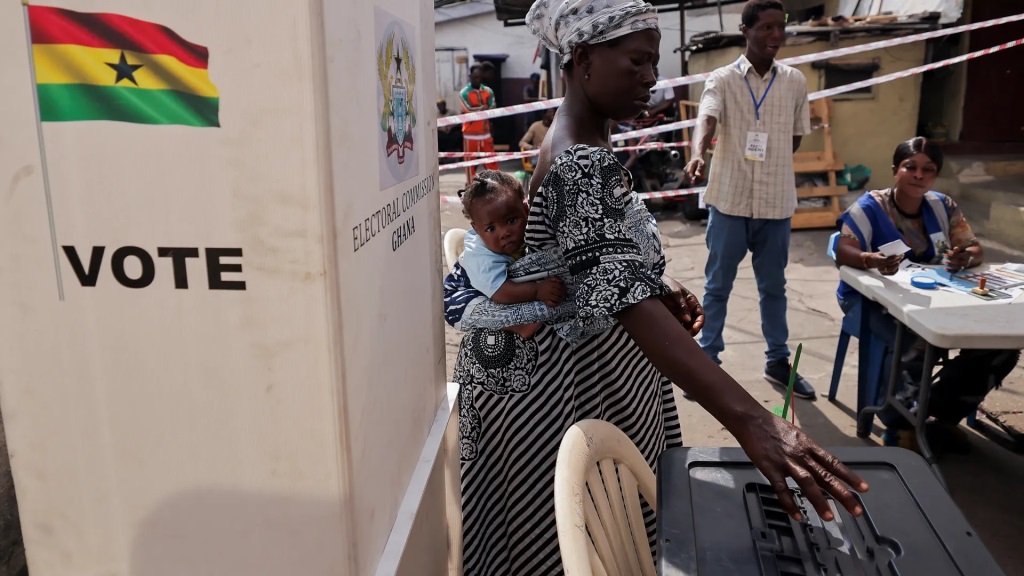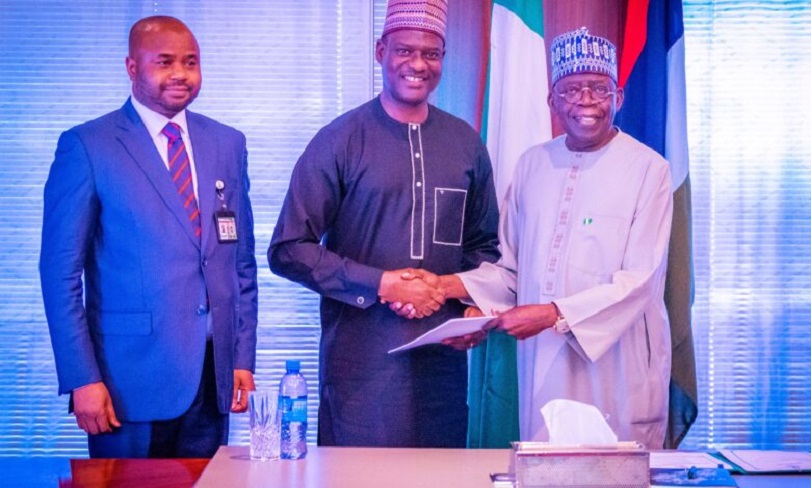Feature/OPED
How Business Can Build Future Career Paths for Women in AI, Emerging Tech

The underrepresentation of women in the Science, Technology, Engineering, and Mathematics (STEM) fields continues to persist. This is despite progress being made in gender equality and equity over the last decade,
According to the latest UNESCO report on gender-responsive education, too many girls and women are held back by biases, social norms and expectations influencing the quality of the education they receive and the subjects they study. Girls are particularly under-represented in developing countries in the African continent; particularly around STEM education and, consequently, in STEM careers.
This gender disparity is alarming, especially as STEM careers are the jobs of the future. Think AI, workplace 4.0, driving innovation, social wellbeing, inclusive growth and sustainable development. This article seeks to understand the role of business in breaking the gender divide and how businesses can bridge this gap and create women leaders of the future.
Salesforce empowers women in AI
The greatest challenge to advancing gender equality in the workplace, particularly in the technology industry, is addressing women’s under-representation in emerging roles, such as AI as well as in cloud computing, engineering and Data, according to Ursula Fear, Senior Talent Programme Manager at Salesforce.
Across all sectors, systems need to become more equitable. To open up the technology industry specifically, the role of business to address the issue of equity should begin with education. Encouraging more women to enter STEM fields will help businesses address women’s under-representation in emerging roles such as cloud computing, engineering, data and AI.
“Addressing this challenge starts long before a woman enters the workforce. We need to work together – as education institutes, as business, as caregivers – to help cultivate an interest in ICT among young girls by exposing them to all the possibilities ICT holds,” says Fear.
“A successful outcome would be the day that we no longer need to talk about girls or women in ICT as a specific focus area. In the meantime we need to keep nurturing potential, interrogating how to make ICT more appealing to girls and women, and actively debunk any remaining stigmas, myths and stereotypes around ICT being a male field,” adds Fear.
Beyond Bias: Huawei’s Drive for Women in STEM Unlocks Futures
It is imperative to acknowledge the progress made towards gender equality in STEM despite the ongoing societal and educational challenges deterring women from these fields.
According to Vanashree Govender, Senior Communications Manager at Huawei South Africa, Huawei’s commitment to ICT education and empowerment is demonstrated through initiatives like the Seeds for the Future and the Huawei Bursary Programme which actively targets a 50-50 gender split.
“Our commitment to connecting more South Africans to the internet, with our telco partners, and bringing the very latest technologies to SA, means that we are well placed to run big ICT training programmes in the country. These programmes actively target women participants, from students to women entrepreneurs.”
Huawei’s Women in Tech programme, in partnership with the Department of Communications and Digital Technologies in South Africa, provides crucial exposure to new technologies like 5G, Cloud and AI to women entrepreneurs and ICT students to advance their digital skills and prepare for the future workplace.
These initiatives are integral to creating an inclusive environment and equipping women with the necessary tools to excel in STEM without being limited by gender roles or accessibility challenges.
Uber champions female entrepreneurship, empowering women to drive
Over the years, the e-haling industry has been male-dominated. In recent times, however, there has been a shift towards female e-hailing drivers taking up opportunities in this tech platform economy.
To aid and support women’s active participation and champion entrepreneurship in the South African economy, and through technology, Uber has launched several initiatives and in-app features to help women overcome the barriers that they face in their businesses. These include Women Rider Preferred, a feature that provides women with a choice in opting to be connected to women riders.
“We are especially proud to have been able to empower women in South Africa with access to new and flexible earning opportunities by providing them with the necessary resources to thrive and continue to improve their mobility and independence,” says Lorraine Onduru, Head of Communications, Sub-Saharan Africa, Uber.
“Uber is committed to women earners and working with industry partners to remove any barriers that exist for women to get on the platform,” adds Lorraine.
Future Forex take proactive steps to empower women in fintech sector
As part of our commitment to addressing the gender divide in STEM roles, Future Forex has taken proactive steps to empower and support women within the fintech sector. “We’re proud to have a strong representation of women, particularly in key leadership positions, across various departments within our organisation,” says Harry Scherzer, CEO of Future Forex. These talented women and all the females within their teams bring diverse skills, perspectives and expertise, contributing significantly to our company’s success and growth.
“An example of this is that, as part of our software engineering department, we have a seasoned female professional who has been instrumental in driving our technological advancements forward, demonstrating exceptional proficiency and dedication in her role,” says Scherzer. “Similarly, our Head of Trading is a science graduate who possesses a wealth of industry knowledge and strategic acumen, guiding our trading operations with precision and insight,” he adds.
Future Forex aren’t only addressing the gender divide by investing in the empowerment and capacity of women in STEM, but also cultivating a talented and diverse female workforce that drives innovation and success for the future.
Creating purposeful spaces conducive for women in STEM
Study after study across the world and various sectors has shown that by including and empowering women you accelerate sustainable development across all metrics, from health and education to food security and finance. “It is how we achieve a higher return on investment (ROI) in our quest to solve the challenges that plague our communities,” says Ayanda Mvandaba, CA(SA) and Entrepreneur.
“We must be purposeful about curating spaces that are conducive for women in STEM to create magic,” adds Mvandaba. In bridging the gap, the first point of call is, and always will be, access to information and opportunities. Mvandaba says businesses need to be intentional in how they choose to expose women in STEM in ways that boost their confidence and their skills and grow their networks.
“To address the gender divide with women in STEM roles, in my capacity as CEO of Drink Nil, I engage in mentorship relationships, provide sponsorships, emphasise continuous professional development, and expose women to my network while teaching them to use the network effectively and the importance of social capital.” Mvandaba, this year, has also launched the Ayanda Vabaza-Mvandaba Bursary for students going into any field within the commerce faculty at a South African University.
Feature/OPED
The Future of Payments: Key Trends to Watch in 2025

By Luke Kyohere
The global payments landscape is undergoing a rapid transformation. New technologies coupled with the rising demand for seamless, secure, and efficient transactions has spurred on an exciting new era of innovation and growth. With 2025 fast approaching, here are important trends that will shape the future of payments:
1. The rise of real-time payments
Until recently, real-time payments have been used in Africa for cross-border mobile money payments, but less so for traditional payments. We are seeing companies like Mastercard investing in this area, as well as central banks in Africa putting focus on this.
2. Cashless payments will increase
In 2025, we will see the continued acceleration of cashless payments across Africa. B2B payments in particular will also increase. Digital payments began between individuals but are now becoming commonplace for larger corporate transactions.
3. Digital currency will hit mainstream
In the cryptocurrency space, we will see an increase in the use of stablecoins like United States Digital Currency (USDC) and Tether (USDT) which are linked to US dollars. These will come to replace traditional cryptocurrencies as their price point is more stable. This year, many countries will begin preparing for Central Bank Digital Currencies (CBDCs), government-backed digital currencies which use blockchain.
The increased uptake of digital currencies reflects the maturity of distributed ledger technology and improved API availability.
4. Increased government oversight
As adoption of digital currencies will increase, governments will also put more focus into monitoring these flows. In particular, this will centre on companies and banks rather than individuals. The goal of this will be to control and occasionally curb runaway foreign exchange (FX) rates.
5. Business leaders buy into AI technology
In 2025, we will see many business leaders buying into AI through respected providers relying on well-researched platforms and huge data sets. Most companies don’t have the budget to invest in their own research and development in AI, so many are now opting to ‘buy’ into the technology rather than ‘build’ it themselves. Moreover, many businesses are concerned about the risks associated with data ownership and accuracy so buying software is another way to avoid this risk.
6. Continued AI Adoption in Payments
In payments, the proliferation of AI will continue to improve user experience and increase security. To detect fraud, AI is used to track patterns and payment flows in real-time. If unusual activity is detected, the technology can be used to flag or even block payments which may be fraudulent.
When it comes to user experience, we will also see AI being used to improve the interface design of payment platforms. The technology will also increasingly be used for translation for international payment platforms.
7. Rise of Super Apps
To get more from their platforms, mobile network operators are building comprehensive service platforms, integrating multiple payment experiences into a single app. This reflects the shift of many users moving from text-based services to mobile apps. Rather than offering a single service, super apps are packing many other services into a single app. For example, apps which may have previously been used primarily for lending, now have options for saving and paying bills.
8. Business strategy shift
Recent major technological changes will force business leaders to focus on much shorter prediction and reaction cycles. Because the rate of change has been unprecedented in the past year, this will force decision-makers to adapt quickly, be decisive and nimble.
As the payments space evolves, businesses, banks, and governments must continually embrace innovation, collaboration, and prioritise customer needs. These efforts build a more inclusive, secure, and efficient payment system that supports local to global economic growth – enabling true financial inclusion across borders.
Luke Kyohere is the Group Chief Product and Innovation Officer at Onafriq
Feature/OPED
Ghana’s Democratic Triumph: A Call to Action for Nigeria’s 2027 Elections

In a heartfelt statement released today, the Conference of Nigeria Political Parties (CNPP) has extended its warmest congratulations to Ghana’s President-Elect, emphasizing the importance of learning from Ghana’s recent electoral success as Nigeria gears up for its 2027 general elections.
In a statement signed by its Deputy National Publicity Secretary, Comrade James Ezema, the CNPP highlighted the need for Nigeria to reclaim its status as a leader in democratic governance in Africa.
“The recent victory of Ghana’s President-Elect is a testament to the maturity and resilience of Ghana’s democracy,” the CNPP stated. “As we celebrate this achievement, we must reflect on the lessons that Nigeria can learn from our West African neighbour.”
The CNPP’s message underscored the significance of free, fair, and credible elections, a standard that Ghana has set and one that Nigeria has previously achieved under former President Goodluck Jonathan in 2015. “It is high time for Nigeria to reclaim its position as a beacon of democracy in Africa,” the CNPP asserted, calling for a renewed commitment to the electoral process.
Central to CNPP’s message is the insistence that “the will of the people must be supreme in Nigeria’s electoral processes.” The umbrella body of all registered political parties and political associations in Nigeria CNPP emphasized the necessity of an electoral system that genuinely reflects the wishes of the Nigerian populace. “We must strive to create an environment where elections are free from manipulation, violence, and intimidation,” the CNPP urged, calling on the Independent National Electoral Commission (INEC) to take decisive action to ensure the integrity of the electoral process.
The CNPP also expressed concern over premature declarations regarding the 2027 elections, stating, “It is disheartening to note that some individuals are already announcing that there is no vacancy in Aso Rock in 2027. This kind of statement not only undermines the democratic principles that our nation holds dear but also distracts from the pressing need for the current administration to earn the trust of the electorate.”
The CNPP viewed the upcoming elections as a pivotal moment for Nigeria. “The 2027 general elections present a unique opportunity for Nigeria to reclaim its position as a leader in democratic governance in Africa,” it remarked. The body called on all stakeholders — including the executive, legislature, judiciary, the Independent National Electoral Commission (INEC), and civil society organisations — to collaborate in ensuring that elections are transparent, credible, and reflective of the will of the Nigerian people.
As the most populous African country prepares for the 2027 elections, the CNPP urged all Nigerians to remain vigilant and committed to democratic principles. “We must work together to ensure that our elections are free from violence, intimidation, and manipulation,” the statement stated, reaffirming the CNPP’s commitment to promoting a peaceful and credible electoral process.
In conclusion, the CNPP congratulated the President-Elect of Ghana and the Ghanaian people on their remarkable achievements.
“We look forward to learning from their experience and working together to strengthen democracy in our region,” the CNPP concluded.
Feature/OPED
The Need to Promote Equality, Equity and Fairness in Nigeria’s Proposed Tax Reforms

By Kenechukwu Aguolu
The proposed tax reform, involving four tax bills introduced by the Federal Government, has received significant criticism. Notably, it was rejected by the Governors’ Forum but was still forwarded to the National Assembly. Unlike the various bold economic decisions made by this government, concessions will likely need to be made on these tax reforms, which involve legislative amendments and therefore cannot be imposed by the executive. This article highlights the purposes of taxation, the qualities of a good tax system, and some of the implications of the proposed tax reforms.
One of the major purposes of taxation is to generate revenue for the government to finance its activities. A good tax system should raise sufficient revenue for the government to fund its operations, and support economic and infrastructural development. For any country to achieve meaningful progress, its tax-to-GDP ratio should be at least 15%. Currently, Nigeria’s tax-to-GDP ratio is less than 11%. The proposed tax reforms aim to increase this ratio to 18% within the next three years.
A good tax system should also promote income redistribution and equality by implementing progressive tax policies. In line with this, the proposed tax reforms favour low-income earners. For example, individuals earning less than one million naira annually are exempted from personal income tax. Additionally, essential goods and services such as food, accommodation, and transportation, which constitute a significant portion of household consumption for low- and middle-income groups, are to be exempted from VAT.
In addition to equality, a good tax system should ensure equity and fairness, a key area of contention surrounding the proposed reforms. If implemented, the amendments to the Value Added Tax could lead to a significant reduction in the federal allocation for some states; impairing their ability to finance government operations and development projects. The VAT amendments should be holistically revisited to promote fairness and national unity.
The establishment of a single agency to collect government taxes, the Nigeria Revenue Service, could reduce loopholes that have previously resulted in revenue losses, provided proper controls are put in place. It is logically easier to monitor revenue collection by one agency than by multiple agencies. However, this is not a magical solution. With automation, revenue collection can be seamless whether it is managed by one agency or several, as long as monitoring and accountability measures are implemented effectively.
The proposed tax reforms by the Federal Government are well-intentioned. However, all concerns raised by Nigerians should be looked into, and concessions should be made where necessary. Policies are more effective when they are adapted to suit the unique characteristics of a nation, rather than adopted wholesale. A good tax system should aim to raise sufficient revenue, ensure equitable income distribution, and promote equality, equity, and fairness.
-

 Feature/OPED5 years ago
Feature/OPED5 years agoDavos was Different this year
-
Travel/Tourism8 years ago
Lagos Seals Western Lodge Hotel In Ikorodu
-

 Showbiz2 years ago
Showbiz2 years agoEstranged Lover Releases Videos of Empress Njamah Bathing
-

 Banking6 years ago
Banking6 years agoSort Codes of GTBank Branches in Nigeria
-

 Economy2 years ago
Economy2 years agoSubsidy Removal: CNG at N130 Per Litre Cheaper Than Petrol—IPMAN
-

 Banking2 years ago
Banking2 years agoFirst Bank Announces Planned Downtime
-

 Sports2 years ago
Sports2 years agoHighest Paid Nigerian Footballer – How Much Do Nigerian Footballers Earn
-

 Technology4 years ago
Technology4 years agoHow To Link Your MTN, Airtel, Glo, 9mobile Lines to NIN























